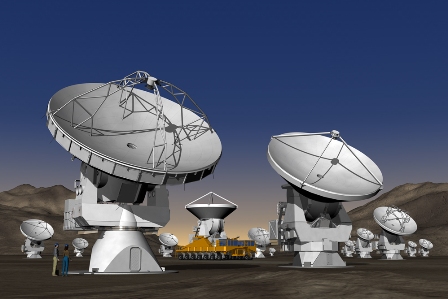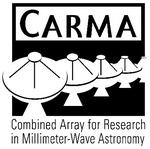The Laboratory for Millimeter-wave Astronomy (LMA) leads the
astronomy department's participation in the Combined Array for
Research in Millimeter-wave Astronomy (CARMA) and is involved
in a variety of projects including instrumentation for
NASA Statospheric Observatory for Infrared Astronomy, broadband
spectrometers for the NRAO Greenbank Telescope, and development of
space interferometer missions concepts and laboratory interferometry
testbeds in collaboration with Goddard Space
Flight Center. The LMA group include 5 professorial faculty, 5
research scientists, 2 postdocs, and 4 graduate students.
A broad range of science is pursued by the LMA group utilizing
space and ground based astronomical facilities at optical, infrared,
and radio wavelengths.

CARMA, the main focus of the LMA, is the premier millimeter-wave
telescope in the world which is operated by the CARMA Association:
Caltech, University of California Berkeley, University of Illinois
and University of Maryland. With 15 radio dishes that can be
positioned in arrays with baselines up to 2 km, CARMA
has the highest angular resolution and best imaging
of any millimeter-wave telescope. Operating in the
3 mm and 1 mm atmospheric windows at an elevation of 2200
meters in the Inyo Mountains of California, CARMA has a
maximum resolution of 0.13 arcseconds. With routine
observations which began in early 2007, CARMA also
serves as a pathfinder for the Atacama Large
Millimeter/submilllimeter Array (ALMA), under
construction at an elevation of 5000 meters on the
Chajnantor plain of the Chilean Andes.
The LMA addresses a wide range of astrophysical problems,
including: How do other planetary systems form and evolve?
What determines the types of stars born in interstellar clouds
and the rate at which they form? Just how far does
pre-biotic chemistry proceed in star and planet formation?
How are massive black holes and the active galactic nuclei
of other galaxies fueled? How are galaxies and cluster
of galaxies assembled? What is the star formation and
heavy element enrichment history of the primeval universe
that is hidden from optical view?
In addition, the LMA provides graduate students with a strong and
open environment for learning interferometry techniques,
instrumentation, and scientific software development. We have
an outstanding history of placing our students in faculty
and scientific staff positions, including with the ALMA.
Please click on the Faculty link along the right side to see
the research interests of individual members and more
specifics about some of the project being pursued by
the LMA.
|
|
|



